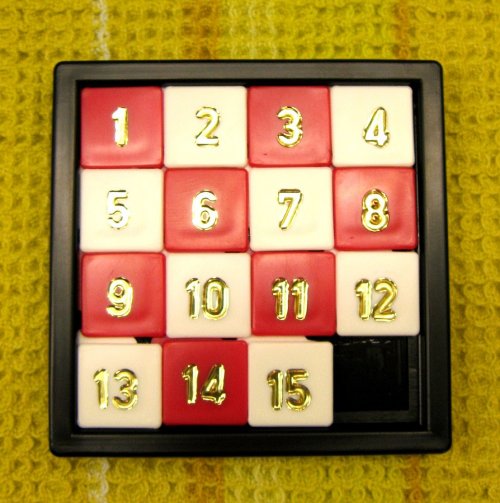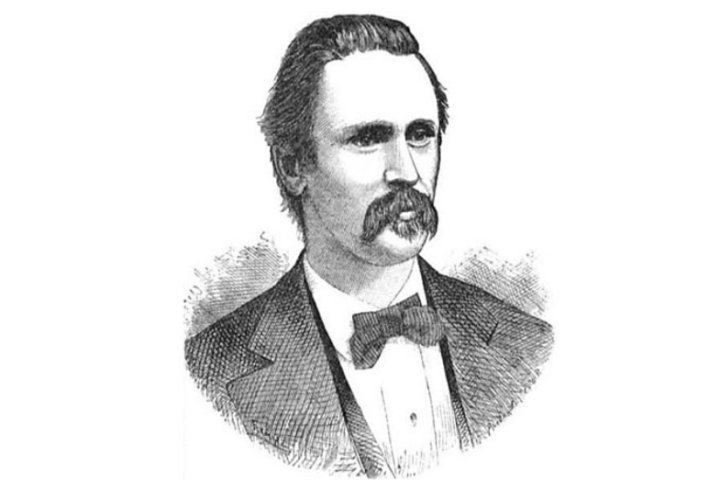One of Loyds most famous compositions is the so-called "Charles XII problem", published in 1859.
Loyd claimed that this position occurred in a game Charles XII played with his advisor Christian Albert Grosthusen when the Swedes were fighting the Turks at Bender in 1713. It's White to move and Charles announced a mate in three.
Solution
1.Rxg3 Bxg3 2.Nf3 Bxh2 3.g4#
A nice solution, but nothing special. However, Loyd continues:
Scarcely had he uttered the words, when a Turkish bullet, shattering the window, dashed the White knight off of the board in fragments. Grothusen started violently, but Charles, with utmost coolness, begged him to put back the other knight and work out the mate, observing that it was pretty enough. But another glance at the board made Charles smile. We do not need the knight. I can give it to you and still mate in four!
Solution
1.hxg3 Be3 2.Rg4 Bg5 3.Rh4+ Bxh4 4.g4#
Loyd goes on:
Who would believe it, he had scarcely spoken when another bullet flew across the room, and the pawn at h2 shared the fate of the knight. Grothusen turned pale. "You have our good friends the Turks with you," said the king unconcerned, "it can scarcely be expected that I should contend against such odds; but let me see if I can dispense with that unlucky pawn. I have it!" he shouted with a tremendous laugh, "I have great pleasure in informing you that there is undoubtedly a mate in 5."
Solution
1.Rb7 Be3 2.Rb1 Bg5 3.Rh1+ Bh4 4.Rh2 gxh2 5.g4#
A hidden joke of this story is that, according to legend, Charles XII actually had his ear shot off at Bender.
Sam Loyd was born in Philadelphia on 30 January 1841, the youngest of eight children. His parents were, as he himself once said, "wealthy but honest". His father was a land developer and investor.
However, Loyd did not grow up in Philadelphia, but in New York, where he and his brothers discovered chess. He was particularly taken by chess problems and had a talent for composing them. He published his first problem when he was just 14 years old – many more were to follow.
Loyd was also a strong practical player. According to Jeff Sonas' chessmetrics page, the famous composer had a historic Elo rating of 2445 in July 1870, which would have made him the world's number 15 at that time.
In 1867 he took part in the strong international tournament in Paris. With 6½/24 he finished tenth in a field of 13 but had the chance to compete against players such as Ignaz Kolisch, Gustav Neumann, Wilhelm Steinitz or Szymon Winawer, who belonged to the world's top players at that time.
But Loyd soon lost interest in chess and instead focused on inventing mathematical puzzles and games. He was extremely prolific and is still considered as one if not the greatest American author and creator of mathematical puzzles.
However, he sometimes seemed to have a peculiar understanding of truth. For instance, from 1891 until his death on 10 April 1911, Loyd claimed that he had invented the 15 puzzle. The object of this popular game is to place 15 tiles, numbered from 1 to 15, in the correct order on the 16 squares of a four-by-four square by moving the tiles.

15 puzzle | Photo: Micha L. Rieser
But this game, which Bobby Fischer also liked to play quickly and well, as he was able to demonstrate to an audience of millions on television on November 7, 1972 when he was a guest in Johnny Carson's Tonight Show, was invented by Noyes Palmer Chapman, who in 1880 had applied for a patent for it. It was only in 1896 that Loyd published his first article on the 15 puzzle, and his claim to be the inventor of that game is just false.
But Loyd undoubtedly composed the following chess problem. It is one of his most famous problems, and in allusion to the famous poem by Henry Wadsworth Longfellow he named it "Excelsior".
White to move and mate in five.
White would like to mate with 1.Rd5 followed by 2.Rd1. But 1.Rd5 fails to 1...Rc5 with an exchange of rooks. Therefore, White plays...
1.b4
The Longfellow poem "Excelsior", to which Loyd's problem refers, tells the story of a young man who climbs further and further up into the snowy Alps, until he finally finds death. Here it is the white b-pawn who climbs up the board. Black must now sacrifice his rook to avert the threat of mate with Rd5-d1.
1...Rc5+ 2.bxc5
The Excelsior pawn takes the rook and advances further. White now threatens 3.Rb1#. Black has only one way to prevent that.
2...a2
But White now renews the threat of Rd5–Rd1# – of course, by advancing the former b-pawn further up the board.
3.c6
White now threatens not only Rd5–Rd1 mate, but also Rf5–Rf1 mate.
3...Bc7
If White now plays 4.Rd5, Black has 4...Bxg3, and after 5.Rd1+ he then delays the mate with 5...Be1. After 4.Rf5 Black delays the mate with 4...Bf4. But of course White's b-pawn takes another step ahead.
4.cxb7
No matter, what Black now plays, White will mate with 5.bxa8Q# or 5.bxa8B#. Excelsior!
When Loyd published this problem in the London Era on 13 January 1861, he accompanied it, as he often did, with a little story. According to Loyd, he composed the problem after a bet with a gentleman named Dennis Julien. Julien, according to Loyd, had claimed to be able to tell which piece or pawn would mate in any given chess problem. When Loyd presented him with the Excelsior problem and said that Julien only had to indicate which piece would not give mate, Julien pointed to the pawn on b2 – which, of course, is the very piece that will mate in the end.
And whether this story is true or whether Loyd made it up, the Excelsior problem remains an impressive example of Loyd's wit and creativity.
Links
More about problem chess
























